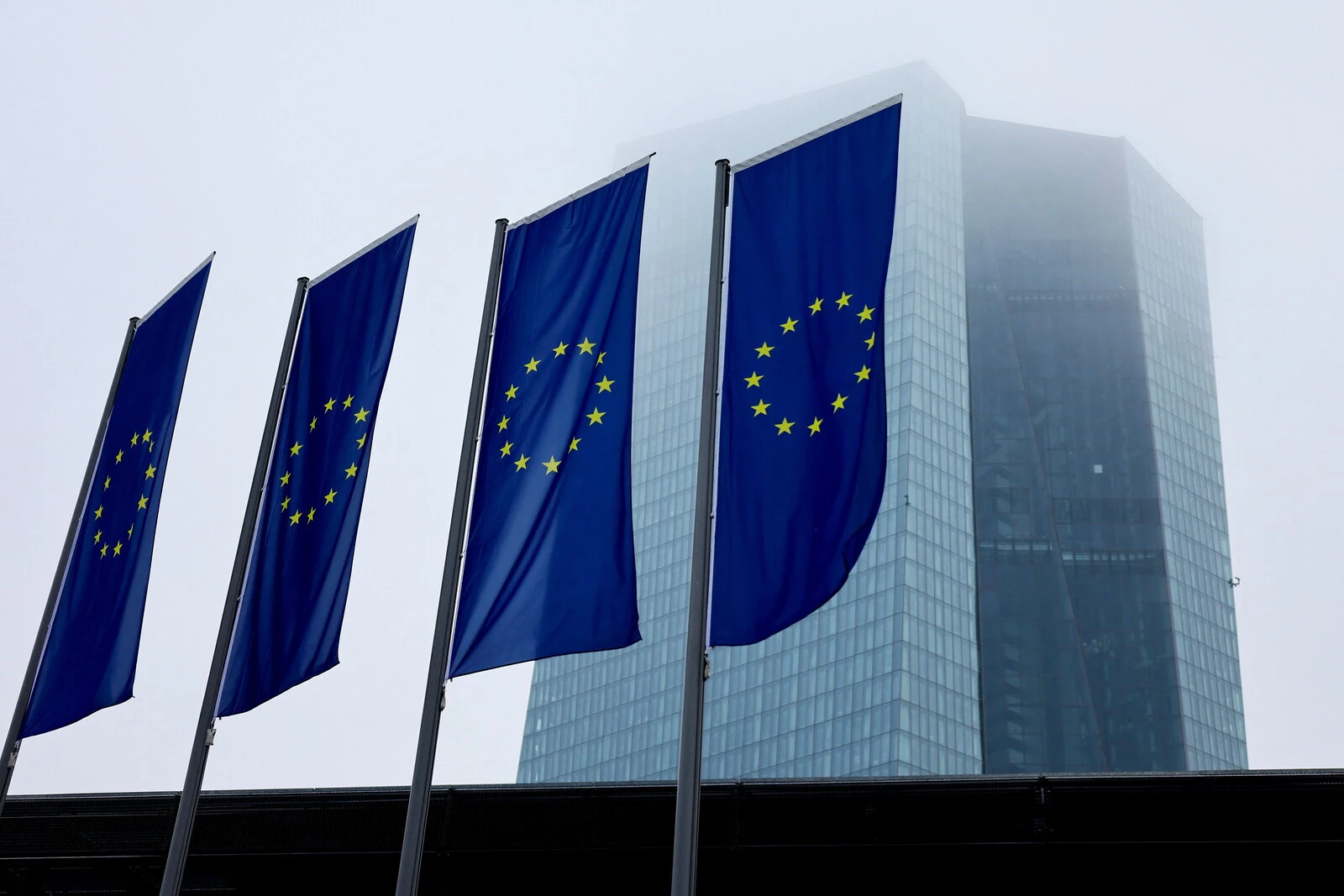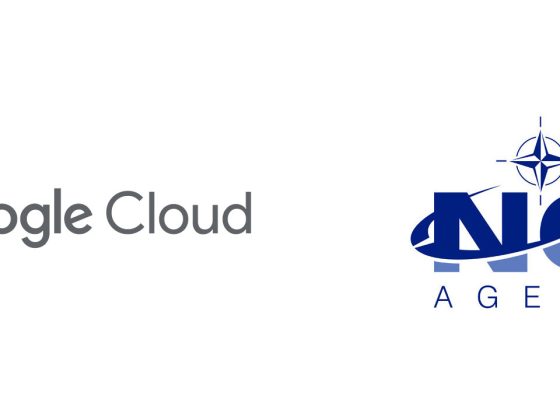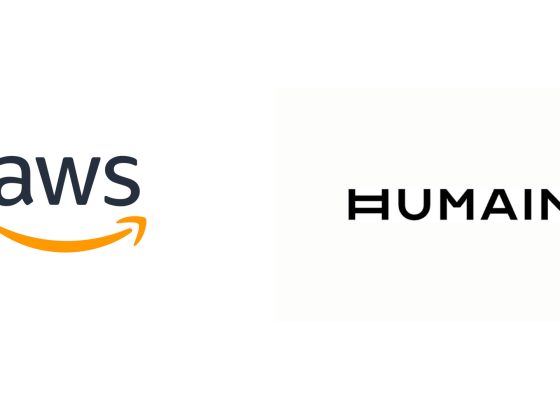The European Central Bank – but could AI soon usurp its role?
Image: Reuters/Wolfgang Rattay
- The efficiency and monopolistic tendencies of different AI foundational models will emerge as defining economic factors.
- AI tokens will become fundamental units of computational work in apps powered by such models.
- As these become key economic forces, AI companies could eventually wield economic influence comparable to that of today’s central banks.
Artificial intelligence is catalyzing significant paradigm shifts in the economic landscape, including the redefinition of currency with AI tokens, a new metric of economic efficiency measured in computational energy use, and the unparalleled influence wielded by AI foundation models. The monopolistic nature of the latter is potentially akin to the role of central banks in today’s economic infrastructure.
AI foundation models are large-scale machine learning models that have been trained on vast datasets to understand and generate human-like text, images, audio or other data types. These models, like GPT and BERT, are capable of performing a wide range of tasks across different domains with minimal task-specific tuning. The “foundation” aspect refers to their ability to serve as a base upon which specialized AI applications can be built, ranging from natural language processing and computer vision to more complex decision-making and creative tasks.
AI tokens, not to be confused with cryptocurrency tokens, serve as the fundamental units of computational work in AI applications powered by foundation models, such as ChatGPT. AI tokens play a pivotal role in shaping the pricing frameworks for the use of AI foundation models and act as the primary medium of exchange in the age of AI.
Economic models help us understand how things work in the economy, such as how prices are determined or how people decide what to buy. Specifically, the “supply and demand” model explains how prices change; if there is high demand and low supply, the price goes up, and vice versa. As AI integrates into all facets of life, AI foundation models will emerge as the predominant driving forces on the supply side of the economy.

Paradigm shift 1: AI tokens as currency
AI is seamlessly integrating into every aspect of our lives, from enhancing personal assistants that organize our daily tasks to empowering smart cities to efficiently manage traffic and key services.
As AI foundation models increasingly become the driving force behind various sectors and industries, AI tokens are gaining significant value. Initially created to quantify and manage AI computational tasks, these tokens are evolving into a universal currency for transactions. Their application may extend beyond AI services to include a broad spectrum of goods and services, akin to the historical role played by gold and fiat currencies.
The growing trust and reliance on AI tokens, supported by a solid and expanding AI infrastructure, offer an attractive alternative to traditional financial systems known for their volatility. As we move towards a digital and AI-enhanced world, AI tokens are set to emerge as a borderless currency, crucial for global economic transactions. This shift marks the beginning of a revolutionary change in our financial systems, establishing a new economy deeply integrated with and fueled by AI.
Paradigm shift 2: Economic efficiency measured by FLOPs per joule
Economic efficiency evaluates how effectively resources are used to produce and distribute goods and services to satisfy consumer demand. One common metric for assessing this efficiency is GDP per capita, which gauges the economic output generated per individual.
In today’s revised economic framework, the principle is that an AI foundation model’s impact on economic growth is directly tied to its energy-to-computational efficiency. Essentially, the more an AI foundation model can accomplish computationally with less energy, the more it fuels economic prosperity. This insight establishes a robust link between the efficiency of computing and the advancement of the economy. Therefore, if AI tokens emerge as the standard currency in this model, then energy becomes the foundational anchor of this currency.
The primary indicator of economic efficiency evolves to focus on the ability of AI systems to transform energy into smart outputs, measured in terms of computational efficiency via Floating Point Operations (FLOPs) per joule. This paradigm shift acknowledges that the true value of the modern economy is derived from the sophisticated insights and improvements powered by AI foundation models, heralding a major shift in how economic value is appraised.
Paradigm shift 3: Inevitable monopoly
AI is monopolistic by nature. The dominance of AI foundation models mirrors historical patterns observed in the technology sector, where pioneering companies gained substantial market dominance due to their innovations and patents, as seen with Microsoft in the PC era and Google in the age of search engines and online advertising.
This dominance of AI foundation models is further fortified by the exclusive access these companies have to extensive and ever-expanding datasets, essential for refining and advancing AI models. Such a dynamic fosters a feedback loop, positioning these corporations as the premier, sometimes exclusive, purveyors of cutting-edge AI technologies, thereby cementing their market monopoly.
In this age of AI, we face critical challenges, including ensuring fair competition within the market, safeguarding data privacy, and guaranteeing that the advantages of AI technologies are distributed equitably.
Paradigm shift 4: Foundation models as central banks
The ownership of AI foundation models grants certain companies a degree of influence and authority that may rival, or even exceed, that of central banks today. This comparison arises from their dominion over the AI-powered economic infrastructure, mirroring the way central banks manage monetary policies and influence economic direction.
These technological behemoths, armed with AI foundation models, could essentially act as the custodians of the global economy, directing the flow of information, overseeing large-scale computational operations, and dictating the distribution of AI services. Their involvement in the governance of AI tokens further cements their status, drawing a parallel to the monetary oversight held by central banks.
The potential accumulation of such profound control by a select few companies prompts vital concerns regarding economic autonomy, the mechanics of the market, and the imperative for comprehensive regulatory measures to guarantee equitable access to AI technologies and avert the monopolistic grip on crucial AI infrastructure.
AI foundation models may not only redefine currency and economic efficiency, but also reshape the dynamics of market power and control. Given this abrupt societal transition, ensuring the equitable distribution of AI’s benefits, safeguarding data privacy and fostering fair competition become paramount. In particular, the evolution from traditional economic models to those driven by AI demands a thoughtful approach to governance and regulation, aiming to harness the potential of AI while mitigating its risks.
By: Dr Shaoshan Liu (Director, Embodied Artificial Intelligence, Shenzhen Institute of Artificial Intelligence and Robotics for Society)
Originally published at: World Economic Forum
Source: cyberpogo.com









